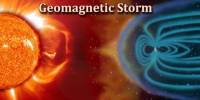Physicists from Exeter and Trondheim have devised a theory that explains how to use space reflection and time-reversal symmetries to govern transport and correlations within quantum materials.
Two theoretical physicists from the University of Exeter (UK) and the Norwegian University of Science and Technology (Trondheim, Norway) have developed a quantum theory that describes a chain of quantum resonators that satisfy space reflection and time-reversal symmetry.
They’ve demonstrated how the various quantum phases of such chains are linked to interesting events, which could be important in the development of future quantum devices that rely on strong correlations.
Spacetime symmetries are characteristics of spacetime that can be defined as symmetrical in some way. In physics, symmetry plays a significant role in simplifying solutions to a variety of problems.
The contrast between open and closed systems is a common one in physics. Because closed systems are isolated from the outside world, energy is conserved because there is nowhere for it to escape. Open systems are connected to the outside world and are subject to energy gains and losses as a result of exchanges with the environment.
There is a third case to consider. When the energy going in and out of the system is carefully balanced, the system enters a state that is halfway between open and closed.
When the system obeys a combined symmetry of space and time, that is, when (1) switching left and right and (2) flipping the arrow of time leave the system basically intact, the system is said to be in equilibrium.
Our work on parity-time symmetry in open quantum systems further emphasizes how symmetry underpins our understanding of the physical world, and how we may benefit from it.
Charles Downing
Physical problems are frequently examined and solved by observing aspects that are symmetrical in some way. The cosmological principle, which restricts the types of universes that are consistent with large-scale evidence, includes symmetry in cosmic problems.
Quantum materials are used in technology you’ve probably previously seen, such as hospital MRIs, which employ superconductors, and hard disk drives, which use massive magnetoresistance sensors. Quantum materials’ usage in energy technology, on the other hand, is still uncommon.
Downing and Saroka describe the phases of a quantum chain of resonators that satisfy space reflection and time-reversal symmetry in their recent paper. A trivial phase (associated by intuitive physics) and a nontrivial phase are the two main phases of interest (marked with surprising physics).
A unique point marks the transition between these two eras. The researchers discovered the locations of these unique points for a chain of any number of resonators, revealing how quantum systems obeying these symmetries scale up.
The nontrivial phase, in particular, allows for unusual transport effects and strong quantum correlations, which can be exploited to regulate the behavior and propagation of light on nanoscopic length scales.
This theoretical study could help with the generation, manipulation, and control of light in low-dimensional quantum materials, with the goal of developing light-based systems that use photons, or light particles, as workhorses at sizes as small as one-billionth of a meter.
Charles Downing, from the University of Exeter, commented: “Our work on parity-time symmetry in open quantum systems further emphasizes how symmetry underpins our understanding of the physical world, and how we may benefit from it.”
Vasil Saroka, from the Norwegian University of Science and Technology, added: “We hope that our theoretical work on parity-time symmetry can inspire further experimental research in this exciting area of physics.”
















